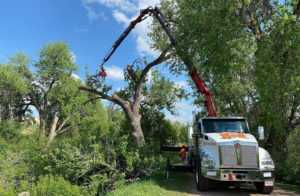Haircut San Francisco is a style or haircut that complements your face shape and hair texture. It can also enhance your personal and professional appearance.
Haircut is also a term used in the financial markets. In this context, it refers to a lower-than-market valuation of an asset, typically a debt instrument.

The choice of hairstyle and color is a powerful form of self-expression. It reveals an inner sentiment and conveys your personality, values, and mood. It can even reflect a sense of rebellion, professionalism, or confidence. Choosing the right hairstyle and color can reinforce your identity, helping you feel more confident and comfortable in a world filled with opinions and standards. Moreover, it is important to experiment with different styles and colors to find a look that resonates with your unique beauty. Embracing your natural hair texture and finding a style that enhances it can be a beautiful form of self-expression.
However, the decision to change one’s hairstyle can be a complicated process. It involves a complex web of cultural and social influences, and can affect one’s self-perception and sense of personal style. In addition, it can be difficult to strike a balance between societal expectations and one’s desire for self-expression. This can be particularly challenging for individuals with naturally curly hair, who may struggle to achieve a sleek and straight look.
Many people choose to make a bold statement with their hair, often opting for vibrant colors or avant-garde cuts. This trend is often fueled by a desire to break away from societal norms and express one’s individuality. Others may choose to wear their hair long, embracing its natural curls as a symbol of self-love and confidence. Still, others may choose to maintain a more conservative and traditional look, either out of a desire to fit in or to please their family or peers.
Whatever the motivation, a hair transformation is a powerful form of self-expression that can significantly impact one’s self-image and confidence. Numerous studies and anecdotes reveal the profound impact that a haircut can have on an individual’s self-esteem, and can influence how others perceive them.
Boost in self-confidence
A fresh haircut can give you a boost in self-confidence. Whether you’re trying to make a good impression on a date or impress a client, looking your best can increase your confidence. This is especially true if your hairstyle matches your personal style and aligns with your identity. For example, if you’re an extrovert who enjoys expressing creativity with your hairstyle, a bold look can be empowering and make you feel confident in your own skin.
In addition to boosting your mood, having the right haircut can also enhance your facial features and align with your personal style. For example, a layered cut can add length and volume to your hair, which can draw attention to your eyes or jawline. Additionally, a well-cut fringe can frame your face and highlight your eyes, which can give you a more sophisticated and refined appearance. If you’re unsure of what style to choose, consult with a professional stylist to help you find the perfect haircut for your face shape and personality.
Moreover, a fresh haircut can give you a sense of renewal and motivation for the future. It can also reinforce your sense of control by letting you know that you have the power to change your appearance whenever you want. For some, the feeling of change can also inspire additional lifestyle changes, such as healthy eating and exercise habits.
Ultimately, your confidence and self-esteem aren’t dependent on your appearance. Although a new haircut can provide a temporary confidence boost, true self-esteem comes from internal factors such as a positive mindset and a practice of self-care. However, a well-groomed appearance is an important part of maintaining your mental and physical health. It can also be a sign of self-care, allowing you to take time out for yourself and nurture your well-being. This can be especially beneficial for individuals with low self-esteem or anxiety. Hairdressing is more than just a profession; it’s a transformative art that plays a significant role in shaping a person’s self-image and confidence. From classic cuts to bold colors, a haircut can have a profound impact on your appearance and self-perception.
Aesthetics
Haircut is a form of aesthetics, and the choice of haircut conveys a message about one’s personal style. In many cultures, haircuts are more than just a simple act of grooming; they serve as symbols of identity, tradition, and social status. Moreover, haircuts can be used to mark important events in one’s life. For instance, a change in hairstyle can be seen as a sign of mourning or a transition to adulthood.
A well-executed haircut can elevate a person’s image and boost his or her confidence. This confidence can then translate into positive relationships and career opportunities. However, a bad haircut can have the opposite effect, causing individuals to feel insecure and uncomfortable in social situations. Therefore, it’s essential to experiment with different styles and find a look that suits you best.
Throughout history, the hairstyle has been linked to various cultural and fashion movements. For example, punk rock haircuts reflected the rebellious spirit of that era, and sleek cuts were associated with a sense of professionalism and authority. Similarly, many women use their hair to express their appreciation for certain musical or cultural influences.
The process of styling the hair can be considered an art form, with stylists employing a variety of techniques to create unique looks that complement each individual’s face shape and personality. Whether it’s a sleek bob, an updo with bangs, or a dramatic cut that frames the face, a good haircut can help boost self-esteem and enhance overall mental health. Furthermore, regular maintenance can keep your hair healthy and looking salon-fresh. So, be sure to wash and condition your hair regularly and trim it every six to eight weeks. This will help prevent split ends and keep your hair looking healthy. It also helps to incorporate a deep conditioning treatment into your routine every few months to maintain the moisture in your hair.
Personal branding
Building a personal brand can help you become more recognizable to potential clients and establish a certain level of credibility. For example, suppose you are an expert colorist who specializes in techniques such as balayage and foliage, or a stylist who is skilled in different haircutting techniques, like thinning, texturizing, or razor work. In that case, you can use your social media channels to post photos of your work and showcase your skillset.
Additionally, you can also encourage your clients to share their own photos of themselves styled by you on their social media channels as a way to build recognition for your brand and gain new clients. Aside from promoting your services, it is also important to communicate with your clients and build rapport, which will ultimately increase your chances of getting positive reviews.
Haircut is a word that is widely used in financial contexts, where it is sometimes synonymous with repo (repurchase agreement in debt-instrument finance). The term can also be viewed as an allusion to the haircuts that creditors and employees receive in Chapter 11 bankruptcy. The term is also used in slang to refer to a reduction in payment or value. For example, a creditor may be granted “a haircut” while a company’s shareholders are given “zilch”. This is because Chapter 11 bankruptcies typically involve a partial liquidation, with creditors receiving some form of repayment and employees and shareholders (usually) being laid off.

